
|
Lorna Mills and Sally McKay
Digital Media Tree this blog's archive OVVLvverk Lorna Mills: Artworks / Persona Volare / contact Sally McKay: GIFS / cv and contact |
View current page
...more recent posts
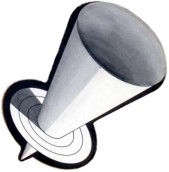
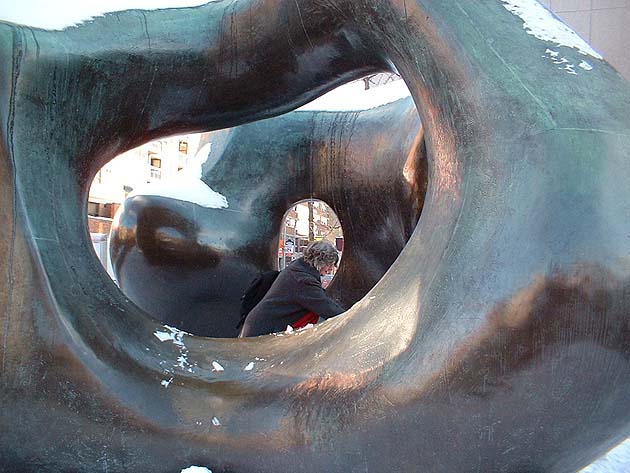
I have always disliked Henry Moore's sculpture with what you might call a passion. His big holey ladies creep me out. But I can't help feeling a soft-spot for this one outside the Art Gallery of Ontario because lots of people, some of them adults, really do enjoy smacking it to make sounds and clambering on it. The AGO has a ton of Henry Moore's indoors too.
 John Marriott, Where the cat's at, video projection and colour photograph, 1999. (taken from here) | This image is from artist John Marriott's video, Where the cat's at, in which a cat wanders about the AGO and seems to have a particularly intense time (slinking around low to the ground with it's mouth open) in the Henry Moore Sculpture Centre. There's an old shotgun review by Reid Diamond online here. |
While on the subject of the AGO's permanent collection, I think Richard Hill's curation Speaking about Landscape, Speaking to the Land is well worth seeing. The room highlights Rebecca Belmore's big megaphone, with iconic Canadian landscape paintings from (roughly) 120 years of history hung on all the walls around it. Nice to see N.E. Thing next to Emily Carr! And that great big Jack Chambers painting of the 401 has always been a favourite of mine.
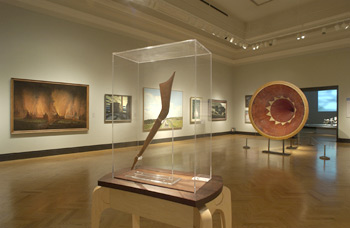 Speaking about Landscape, Speaking to the Land, installation view (taken from here) |
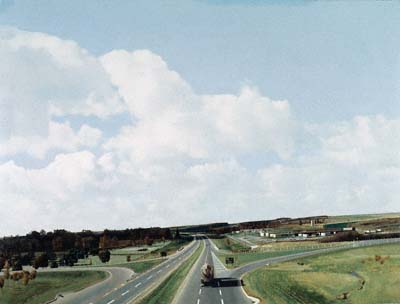 Jack Chambers 401 Towards London No. 1, 1968-1969 (taken from here) |
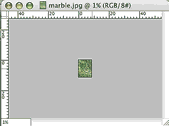
"To all unpopular kids everywhere. Don't give up. You will win one day! To the untold millions of innocent farm animals who die each year for no good reason. You will be saved. The game's much bigger than you think. We are all forever. Turn off the telly. Don't throw stones. Forgive yourself."From the dedication to A Life of Pete Townshend by Geoffrey Giuliano, which I haven't read yet but am saving with relish for a rainy(snowy) day.
Schwarz has posted an excellent collection of quotes on "utopian plagiarism."
Teaser: "Not a machine, not nostalgia for vinyl, and most certainly not a happy digital camper, data trash is the critical (telematic) mind of the twenty-first century. Data trash loves living at that violent edge where total human body scanning meets an inner mind that says no, and means it."
Nostalgia for analog video from the days before homemade images were infinitely malleable, cultural obsession with the empty trappings of stardom, a vague feeling of loss in art criticism for the judgements of an authoritative voice, the slippery nature of elegant theoretical abstraction, all these themes have cropped up recently on this blog, and will continue to do so. Here's some more, a quote from a really good piece by John Bentley Mays on Ydessa Hendeles' big show "Partners," published in Canadian Art last summer. The whole article is online here.
The era during which the work in this show was largely conceived, made and collected—the last quarter of the 20th century—witnessed the rise to great popularity among curators and collectors of an art of gadgetry and mechanical technique, with a philosophical vocabulary (borrowed from the social sciences) to complement it. The issues raised by this art of camera, videocam, computerized printing, digital image manipulation and so on were peculiar to a culture of machines: reproducibility, copy and copyright, authenticity, originality, the ontological status of the ready-made, or this or that mechanical replica. Moral questions, the discussion of ethical imperatives, were as deeply unfashionable among opinion-makers in the art world as in the world at large, where relativism and skepticism, the values of the social sciences, prevailed. (The last notable, credible moral art-world thunderings were pronounced some 20 years ago, by Benjamin H. D. Buchloh, when he laid a curse on the new European painting for its presumed crypto-fascism.)
I am not suggesting things in the period 1975-1999 could have been otherwise. Many in the generation that came of age in the 1960s, my generation, were left exhausted, by the mid-1970s, by the excess, hedonism and shallow idealism of the counterculture—by its extravagant proposals for liberation.
But without the connection to the world provided by moral discourse, the inner world of the 1970s became purely psychological, imaginary, obsessed by the fluid dynamics of sex and power. Ideas—real ideas, I mean, carrying moral conviction and leading to principled courses of action—carried less and less weight. The mental landscape of "Partners" inevitably reflects this desolate world of the late 20th century, its psychic homeland—the era's narrowed vision and emotional range, its diminished ambitions and withdrawn hopes.